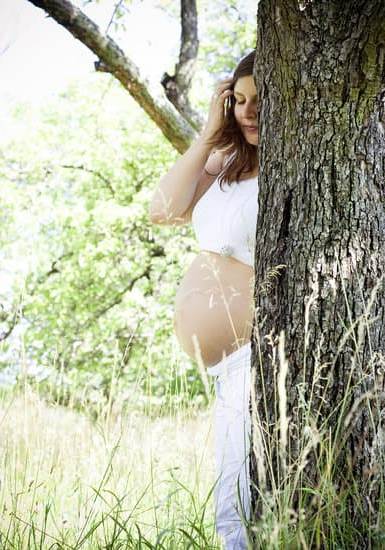Understanding the duration of pregnancy in terms of months is essential for tracking the progress of the baby’s development and preparing for childbirth. In this article, we will delve into the concept of pregnancy and explore how it is measured in months, from conception to full-term.
Pregnancy typically lasts for around nine months, or 40 weeks, from the first day of a woman’s last menstrual period to the birth of her baby. However, pregnancy is often measured in months rather than weeks during prenatal care and discussions with healthcare providers. Understanding how these nine months are divided into trimesters and stages can provide a clearer picture of the changes that occur throughout this transformative journey.
Throughout this article, we will detail the different stages of pregnancy, divided into trimesters, and explain how each stage corresponds to a specific number of months. We will also address common misconceptions about pregnancy length and discuss the reality of how many months constitute a typical full-term pregnancy. Whether you are an expectant mother or someone looking to expand their knowledge on this topic, understanding the concept of pregnancy in terms of months is valuable information.
From Conception to Full-Term
Pregnancy is a remarkable journey that typically lasts around 40 weeks, which is roughly nine months. However, it is important to note that the exact length of pregnancy can vary for each woman and may not always align perfectly with the traditional nine-month timeline. Understanding the different stages of pregnancy and how many months each stage lasts can provide valuable insight into the various developments and changes that occur during this transformative process.
Early Pregnancy
The first stage of pregnancy begins at conception when a woman’s egg is fertilized by a man’s sperm. This marks the start of an incredible journey that will unfold over the course of several months. The initial stage consists of the first trimester, which spans from conception to approximately 12 weeks. During this time, significant changes take place as the fertilized egg develops into an embryo and then a fetus.
Middle Pregnancy
The middle stage of pregnancy encompasses the second trimester, which typically lasts from week 13 to week 28. This period is often referred to as the “honeymoon phase” of pregnancy, as many women experience a welcome relief from early symptoms such as nausea and fatigue. The baby continues to grow and develop rapidly during this time, with expectant mothers beginning to feel fetal movements and experiencing visible signs of their pregnancy.
Late Pregnancy
The final stage of pregnancy includes the third trimester, which extends from week 29 until birth, usually around week 40. As the due date approaches, expectant mothers may experience increased discomfort due to the growing size of their baby.
This period also involves important preparations for labor and delivery, such as attending prenatal appointments, creating a birth plan, and packing a hospital bag. Each stage of pregnancy brings its own unique set of experiences and milestones that contribute to the overall journey towards motherhood.
By understanding how many months each stage of pregnancy lasts, expectant mothers can gain a better grasp on their development as well as be prepared for what lies ahead during this incredible time in their lives.
Trimesters Explained
The duration of pregnancy is typically measured in terms of trimesters, each lasting for three months. This system helps to break down the 40-week gestation period into more manageable and understandable segments.
The first trimester encompasses the first three months of pregnancy, while the second trimester covers months four to six, and the third trimester spans from month seven to nine. By understanding how pregnancy is divided into these trimesters, expectant parents can better comprehend the changes and developments that occur throughout the different stages.
During the first trimester, a woman’s body undergoes significant changes as it adjusts to accommodate a growing fetus. Common symptoms during this time include nausea, fatigue, and breast tenderness. The baby’s major organs and bodily systems begin to form during this stage. By week 12, the embryo has developed into a fetus with distinct facial features and limbs.
The second trimester is often regarded as the most comfortable period of pregnancy for many women. Physical discomforts such as morning sickness typically diminish, and many individuals experience a surge in energy levels.
Months four through six are characterized by noticeable fetal movements, weight gain for both mother and baby, and an expanding belly as the fetus continues to grow. Around the halfway point of pregnancy (week 20), most women will have an ultrasound to check on the development of their baby.
Finally, the third trimester brings with it increased physical challenges as a woman’s body prepares for labor and delivery. During months seven through nine, there may be more pronounced backache, swelling in the lower extremities, Braxton Hicks contractions known as false labor pains, and increased frequency of urination due to pressure on the bladder from the growing uterus. As delivery approaches, expectant mothers may also feel more fatigued and anxious about what lies ahead.
It is important for pregnant individuals to be aware that these timeframes are general guidelines; not all pregnancies progress at the same rate or follow a strict timetable. Each baby develops at its own pace, so some variations in length of pregnancy can occur. In general, however, a full-term pregnancy lasts around 9 months or 40 weeks from conception to delivery.
| Trimester | Duration |
|---|---|
| First Trimester | Months 1-3 |
| Second Trimester | Months 4-6 |
| Third Trimester | Months 7-9 |
The First Trimester
During the first trimester of pregnancy, a woman goes through a multitude of physical and emotional changes as her body begins to adapt to the growing fetus. This stage typically lasts for about three months, or roughly 12-14 weeks. The first trimester is crucial for the development of the baby as major organs and body systems begin to form. It is also during this time that many women experience common symptoms such as morning sickness, fatigue, and tender breasts.
One of the most significant developments during the first trimester is the formation of the baby’s major organs, including the brain, heart, and lungs. By the end of the third month, the fetus has grown from being a cluster of cells to having recognizable features such as eyes, ears, and limbs. Additionally, during this time, the placenta begins to develop and provide essential nutrients and oxygen to support the growing baby.
Furthermore, expectant mothers may also notice changes in their own bodies during the first trimester. Hormonal changes can lead to mood swings and heightened emotions. Many women experience an increased need to urinate as well as food aversions or cravings.
Additionally, physical changes like weight gain and a noticeable “baby bump” may start to become evident towards the end of this stage. Overall, the first trimester is a period of significant change for both mother and baby as they embark on this incredible journey together.
As such, understanding how many months is pregnancy can help expectant mothers better prepare for each stage of their prenatal journey. The average length of pregnancy spans approximately nine months or 40 weeks from conception to delivery.
However, it’s important to note that individual variations are common – some pregnancies may last slightly longer or shorter than this timeframe due to factors such as genetics and overall health. Regardless, keeping track of each trimester in terms of months can aid in monitoring fetal development and ensuring proper care throughout this transformative process.
The Second Trimester
During the second trimester of pregnancy, which typically lasts from week 13 to week 27, many women experience a welcome relief from the symptoms of early pregnancy such as nausea and fatigue. This is often referred to as the “honeymoon phase” of pregnancy, as many women find that their energy levels return and any morning sickness subsides. It’s during this time that most women begin to “look pregnant” and feel their baby’s movements for the first time.
Physical Changes
As the second trimester progresses, the baby bump becomes more noticeable, and many women also experience growth in their breasts and a thickening waistline. Some physical discomforts may arise during this time, such as back pain or stretch marks, as the body continues to expand to accommodate the growing fetus.
Fetal Development
By the end of the second trimester, many important milestones have been reached in fetal development. This includes the formation of fingerprints, bones becoming more defined, and the ability for the baby to hear sounds from outside of the womb. The fetus also becomes more active during this time, with expectant mothers beginning to feel kicks and movements on a regular basis.
Maternal Health
In terms of maternal health, most routine prenatal appointments occur during this time period. Expectant mothers can expect blood tests, anatomical ultrasounds, and glucose screening for gestational diabetes. It’s also important to focus on maintaining a healthy diet and staying physically active throughout these months in order to support both maternal and fetal well-being.
Overall, while each woman’s experience may vary slightly, the second trimester is generally considered a time of increased energy levels and excitement as expectant parents prepare for their new arrival.
The Third Trimester
Here are some key aspects to consider during the third trimester:
- Physical Changes: The third trimester is characterized by rapid growth and development of the baby. This can lead to increased weight gain for the mother and a noticeable expansion of her abdomen.
- Preparation for Birth: As the due date approaches, expectant mothers should start preparing for labor and delivery. This may include attending childbirth classes, creating a birth plan, and making arrangements for postpartum care.
- Emotional Well-being: It is common for women to experience heightened emotions during the third trimester. It’s important for expectant mothers to practice self-care and seek support from their healthcare provider or a mental health professional if needed.
In addition to these changes and preparations, women may also start experiencing physical discomforts such as back pain, frequent urination, and difficulty sleeping. It’s essential for expectant mothers to prioritize rest and self-care during this time. Understanding what to expect in the final months of pregnancy can help alleviate anxiety and ensure a smoother transition into motherhood.
Common Misconceptions
During pregnancy, it is common for women to hear various myths and misconceptions about how long pregnancy lasts in terms of months. One common myth is that pregnancy always lasts nine months. However, this is not entirely accurate. The reality is that pregnancy is typically measured in 40 weeks, which is equivalent to around 9 months and 1 week. This variability can lead to confusion about the actual duration of a full-term pregnancy.
Another misconception about the length of pregnancy is that all women carry their babies for the same amount of time. In reality, the length of a full-term pregnancy can vary from woman to woman. While 40 weeks is considered the average gestation period, it is normal for pregnancies to last anywhere from 37 to 42 weeks. This means that some women may give birth closer to 9 months, while others may go slightly beyond that timeframe.
It’s also important to address the misconception that each trimester of pregnancy neatly corresponds to three months. While this may seem logical, the length of each trimester actually differs slightly due to individual variations in fetal development and gestation. By understanding and dispelling these common misunderstandings about how many months a pregnancy lasts, expectant mothers can better prepare for the actual timeline and stages of their pregnancies.
The Reality of Pregnancy Length
In conclusion, understanding the duration of pregnancy in terms of months is important for expectant parents and healthcare providers alike. From conception to full-term, pregnancy typically lasts around nine months, or 40 weeks.
This time frame is generally divided into three trimesters, with each trimester lasting approximately three months. The first trimester encompasses the initial three months of pregnancy, the second trimester covers the middle three months, and the third trimester includes the final three months leading up to delivery.
It’s important to note that while nine months is considered the average length of a full-term pregnancy, there can be variations. Some pregnancies may last slightly shorter or longer than this standard timeframe.
Additionally, there are instances where preterm birth or post-term pregnancy can occur, resulting in deliveries before 37 weeks or after 42 weeks gestation. These variations underline the need for regular prenatal care and monitoring by healthcare professionals to ensure the well-being of both mother and baby throughout the entire pregnancy.
Ultimately, having an understanding of how many months pregnancy typically lasts can help individuals better prepare for this life-changing experience. By being aware of the different stages and milestones that occur over the course of approximately nine months, expectant parents can be more informed and empowered as they embark on this incredible journey towards welcoming a new life into the world.
Frequently Asked Questions
Is It Really 9 Months of Pregnancy or 10?
Pregnancy is traditionally counted as 40 weeks, which is equivalent to 9 months and 1 week. However, this can be a bit confusing because calendar months are not perfectly aligned with the actual length of pregnancy.
How Many Months Is 40 Weeks Pregnant?
A full-term pregnancy is typically considered to be 40 weeks, which calculates to around 9 months and one week. It’s important to remember that each month does not have the same number of days, so the months throughout pregnancy may not align perfectly with the traditional calendar months.
When Do You Start Counting Pregnancy?
Pregnancy is typically counted from the first day of a woman’s last menstrual period, rather than from the date of conception. This means that by the time a woman misses her period and takes a pregnancy test, she may already be around 4 weeks pregnant, even though conception only occurred about two weeks prior.

Welcome to my fertility blog. This is a space where I will be sharing my experiences as I navigate through the world of fertility treatments, as well as provide information and resources about fertility and pregnancy.





